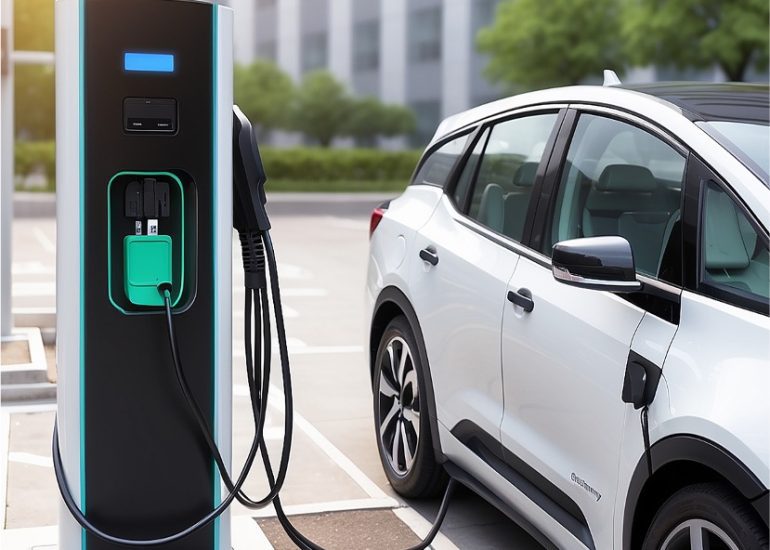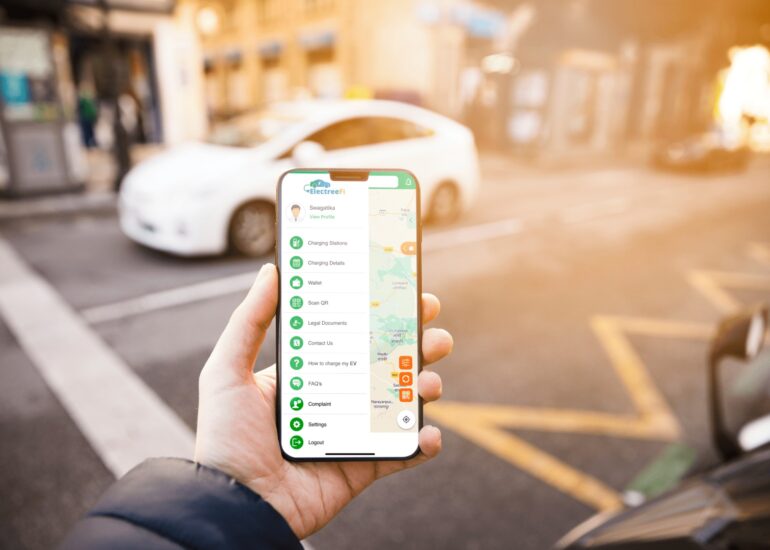Role of Smart Load Management for EV Charging
Electric vehicles (EVs) are revolutionising the way we travel. They are environmentally friendly, clean, and quiet.
However, as more people begin to drive EVs, a challenge arises…. How do we charge all of these vehicles in an effective way that does not exert too much load on the electricity network? What if many cars are charging at once?
This is where Smart Load Management helps. It makes sure EVs are charged safely and smoothly without causing power problems. However, how does this work in real-world situations like offices, housing societies, and public EV charging stations?
What Is Smart Load Management?
Smart Load Management is a method of maintaining control of how electricity is consumed when charging several EVs connected to the same power supply. It prevents the total power consumption from exceeding what is available, which is important to avoid overloading, power cuts or failure, and damage to the system. Rather than the smart load management system allowing all EV chargers to pull power simultaneously, it oversees how much power can be shared by all chargers in the system relative to the overall power available at any given time and based on the number of EVs connected to it.
A Smart Load Management system operates using software and hardware. The system monitors individual and collective electricity usage of the EV chargers relative to the total electricity supply available in real time, then adjusts the configuration automatically. As a result, the EVs will still charge, but the electricity is shared smoothly across the EVs connected to it relative to how much power can be shared at that time. It also considers situational variables, including the time of day, total available power supply capacity, and how urgently each vehicle needs charging.
Why Load Management Matters Now
Previously, charging one or two electric vehicles (EVs) in a building was not a concern. Now, as the number of EVs owned in a given apartment building or office is expanding, charging EVs rests on everyone’s shoulders. When plenty of EVs are charging simultaneously, especially during peak hours, the total current draw can exceed the electrical circuits of the building. Ultimately, this causes the main line to “trip” or potentially overheat the transformer.
This situation has implications of more than just inconvenience. It could lead to dangerous situations such as short circuits, fire hazards, and expensive damage to the building’s electrical infrastructure.
This is where Smart Load Management technology is essential. It helps manage and balance electricity consumption from the chargers to keep the current shared proportionally amongst all EV chargers. This contributes to keeping everyone’s vehicle charging safely without putting the building’s electrical supply at risk.
In Residential Societies
The number of electric vehicle (EV) owners is rising rapidly in multi-unit residential buildings. Because most residents often choose to charge their EVs at night, the peak demand from residential electricity usage happens at the same time as the charging demand from electric vehicles. When the electrical demand from electricity-using appliances and EV chargers surpasses the ratings of the building’s electrical system, the electrical distribution system will have to mitigate the risk of failure through load shedding.
Smart Load Management (SLM) is a system that helps manage the distribution of electricity to Electric Vehicle (EV) chargers in a building or facility. It allows the building owner, manager, or maintenance team to control how much power is used for EV charging—especially during peak hours when electricity demand is high.
If the total electricity demand in the building is too high—such as during evenings when residents are using appliances—SLM systems can reduce the charging speed of certain vehicles or delay their charging until off-peak hours. This helps prevent overloading the electrical system and also takes advantage of lower electricity rates during off-peak times.
One of the key benefits of smart load management is charging prioritization. For example, if a resident needs their EV ready by 5 AM, the system can prioritize charging their vehicle over another resident who needs their car later. This ensures fairness and better resource allocation.
Overall, smart load management makes EV charging safer, more reliable, energy-efficient, and cost-effective by balancing energy usage across multiple vehicles and optimizing when and how each one is charged.
At EV Charging Hubs
Electric vehicle (EV) charging hubs are places where a large number of vehicles come to charge. These hubs are predominantly situated in public locations (e.g., malls, petrol stations, highway rest stops, etc.), and they frequently will have fast chargers that pull a lot of electricity in a short amount of time. Because they can take on ten or twenty vehicles all at once, it can create a significant draw on energy demand.
Smart Load Management can help with this problem, as it ensures a balance of the power flow, enabling an efficient usage of charge across all the chargers. With Smart Load Management, if the charging demand picks up too quickly, the system will slow down one or more of the chargers or shed some of the loads to other times. This way no one will be disconnected from a charger, and all users will enjoy the same seamless experience. Load management can also help improve the cost of energy bills, as the load management system allows for it to plan better times to charge, thus utilising the cheapest electricity.
In Corporate Offices
Many organisations provide EV charging points for their employees nowadays. This is an exciting step towards carbon neutrality; however, this starts to present a new challenge. When a lot of employees turn up to charge their cars at work, it becomes an additional load on the office electricity system, which then impacts other services such as lighting, air conditioning, computers, etc.
With Smart Load Management, all of this is possible within the office building’s electricity combi-system. The office electricity system intentionally prioritises employees based on their charging requirements. For example, an employee who leaves early should get preferential power as opposed to someone staying for the full day. This way employees can arrive and leave without ill effect to the office operation while ensuring their cars get sufficient charge for the end of their working day.
Role of EV CSMS in Load Management
A Charging Station Management System (CSMS) is the software that controls and manages EV charging stations. Consider it the brain behind the charging system; it connects all the chargers and is always monitoring how much power is in use at that moment. The CSMS is fully needed for Smart Load Management to properly work.
The CSMS can read that power usage data in real time and make adjustments on its own. It can initiate, stop, or defer charging at different chargers depending on the total load being put on the station. The CSMS also shows users how much they are using and an estimate of how long the vehicle will take to charge. The CSMS also sets a foundation for the society manager/office admin to track, manage, and bill users. Additionally, this data is beneficial in planning for potential upgrades based on usage behaviours.
Combining Load Management with Solar Power
Smart Load Management is particularly exciting when it’s combined with renewable energy supplies. A lot of buildings and EV hubs are adding solar panels and battery storage systems. When the sun is shining, the solar panels generate electricity that can be used for charging. When it gets dark or cloudy, the batteries provide the extra energy to run the system.
The Load Management system can automatically act on the intrinsic sophistication of our energy systems, deciding when to utilise solar energy (which is as good as free), when to shift to grid energy (which could be more expensive and polluting), and whether or when to charge the batteries (that are responsible for the amount of stems to our electrification). This keeps the economy lower, reduces reliance on polluting energy sources, and ensures our EVs are being charged with the cleanest energy available, making it more sustainable and intelligent.
The Bottom Line
With electric vehicles becoming more prevalent, Smart Load Management is becoming increasingly important. It prevents outages, saves electricity costs, and makes charging more efficient and user-friendly. Smart Load Management systems in a home, workplace, or public charging station are no longer optional but required for safe and efficient EV charging.
With advanced CSMS systems, EV charging becomes smooth, safe, and stress-free, where you can charge your vehicle as other vehicles charge, without the worries of system overloads or long wait times.
Are you ready to access electric vehicle charging in your home or workplace intelligently?
Intelligent load management service for electric vehicle charging is the easy way to make EV ownership simple and worry-free. Start your EV journey with savings, safety, and peace of mind.





